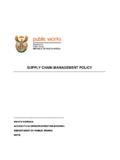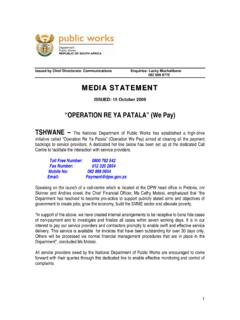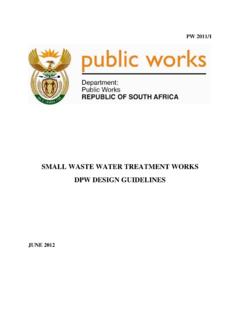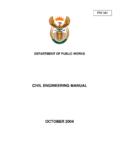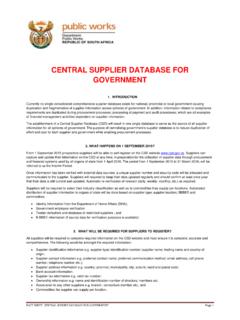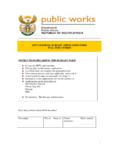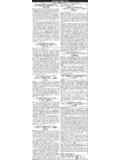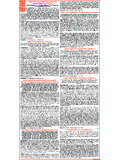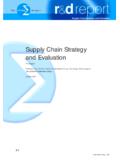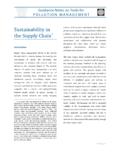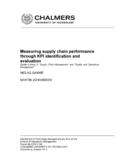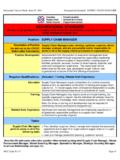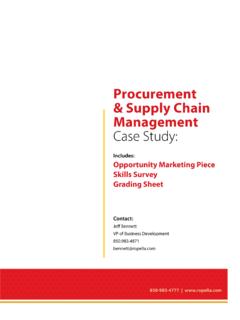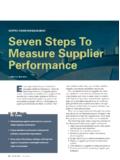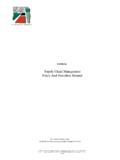Transcription of National Treasury SUPPLY CHAIN MANAGEMENT …
1 National Treasury SUPPLY CHAIN MANAGEMENT Zero Tolerance Against Fraud And Corruption Conference 25 26 September 2007 Henry MalingaSeptember 2007 Contents Background Legislative Environment SCM Process Acquisition Process PPPFA and BBBEE Alignment Prevention and Combating of Corruption Success FactorsThe previous approach of acquiring goods and services in government was highly prescriptive and had, amongst others, the following deficiencies: inconsistency in policy application, lack of accountability, lack of supportive structures, fragmented processes, etcBackgroundSince 1995 Government has been involved in a number of initiatives to reform the procurement environment.
2 Green paper on public procurement Roger Webb Procurement analysis CPAR (Country Procurement Assessment Report)-World BankThe above initiatives resulted in the introduction of the INTEGRATED SUPPLY CHAIN MANAGEMENT function in above initiatives resulted in the introduction of the INTEGRATED SUPPLY CHAIN MANAGEMENT function in following was approved by Cabinet A fifth pillar in respect of equity be included That the Minister of Finance issue general procurement guidelines, including the criteria of Black Economic Empowerment, capacity building, training and job creation The National & Provincial Tender Boards and the various offices be phased out.
3 A Common Service Provider on a cost recovery basis be established. That a pilot programme of procurement reform be implemented in four National departments. That the need for a White Paper on procurement reform is superceded by these decisionsJoint CPAR 2001A range of issues that required resolution was related issues Insufficient Planning and linking to budget Lack of uniform bid and other procedures Conflict of interest due to composition of Tender Bodies Consultants not selected in systematic competitive manner Flaws (corruption) in award of tenders Insufficient training of staff Procurement Processes too rule drivenIssues with the Preferential Procurement Policy Framework Act (PPPFA) and its regulations.
4 PPPF Policies not formulated well due to lack of National targets Cost and outcomes not adequately assessed to evaluate merits of system Incorrect interpretation of Policy (set-asides) Not adequately evaluating who qualified as disadvantaged (verifying claims for preference points) Does not cater for capacity building for disadvantaged enterprises Lack of quantitative data on cost and outcome of preferential system No provision for graduation Conflicting policiesThe conclusions of the CPAR formed the basis for further work done in collaboration with provinces and other ENVIRONMENTTHAT SUPPORTED PROCUREMENT REFORMIN GOVERNMENTLEGISLATIVE ENVIRONMENTS ection 217(I) of The Constitution provides the basis for procurement by determining that.
5 When an organ of state in the National , provincial or local sphere of government, or any other institution identified in National legislation, contracts for goods and services, it must do so in accordance with a system which is fair, equitable, transparent, competitive and cost-effective .Section 217(I) of The Constitution further confers:an obligation for National legislation to prescribe a framework providing for preferential procurement to address the social and economic imbalances of the Preferential Procurement Policy Framework Act (PPPFA) of 2000 and its accompanying Regulations were promulgated to achieve these goals.
6 (This Act incorporated the 80/20 and 90/10 preference point systems.)Section 215-219 of The Constitution further require that: The National Treasury introduce norms and standards within government to prescribe transparency and expenditure control measures, which should include best practices to regulate financial MANAGEMENT in the National and provincial spheres of Municipal Finance MANAGEMENT Act (MFMA) has also been promulgated: Extend the same principles to municipalitiesLEGISLATIVE ENVIRONMENT Thus, it is the responsibility of the National Treasury to: foster coherent financial MANAGEMENT in all organs of State, across all spheres of government.
7 At the same time, ensure that considerable powers are devolved to accounting officers to enable them to manage their affairs within the parameters laid down by the prescribed norms and standards. Section 76(4)(c) of the Public Finance MANAGEMENT Act (PFMA) provides that : The National Treasury may issue a procurement framework for National and provincial departments; A similar provision is also contained in chapter 11 of the Municipal Finance MANAGEMENT Act (MFMA) that is applicable to framework is to ensure the optimal achievement of government s broader strategic ENVIRONMENTM ajor shifts from the Webb ReportEstablish parameters for the SUPPLY CHAIN MANAGEMENT Office in the National Treasury to: Monitor adherence to minimum norms and standards as well as policy outcomes.
8 Facilitate the arrangement of transversally used term CHAIN ManagementThe concept of an integrated SUPPLY CHAIN MANAGEMENT policy system was proposed SUPPLY CHAIN MANAGEMENT could be described as a function that ensures that goods and services are delivered to the right place, in the right quantity, with the right quality, at the right cost and at the right process is aimed at : Introducing international best practices as part of government s drive towards improved financial MANAGEMENT . Replacing the outdated procurement and provisioning processes. Introducing uniformity in SUPPLY CHAIN MANAGEMENT policies and standards in all spheres of government.
9 On 10 September 2003, Cabinet approved the adoption of a Policy Document, titled Policy to Guide Uniformity in Procurement Reform Processes in Government This policy strategy is intended to guide the uniform implementation of Government s procurement reform initiatives and the issuing of Regulations of the Framework for SUPPLY CHAIN MANAGEMENT . The Minister of Finance approved the promulgation of the Regulatory Framework for SUPPLY CHAIN MANAGEMENT on 05 December 2003. Accounting officers / authorities are required to establish and implement a SUPPLY CHAIN MANAGEMENT function that promotes sound financialmanagement and uniformity in all spheres of CHAIN MANAGEMENT PROCESSS upply CHAIN MANAGEMENT ProcessSUPPLY CHAIN PERFORMANANCEDATABASE/SGOVERNMENT S PREFERENTIALPROCUREMENT POLICY OBJECTIVESD emandAcquisitionLogisticsDisposalINFRAST RUCTURE (SYSTEMS)RISK MANAGEMENTACQUISITION PROCESSA cquisition ProcessContractingAdjudicationRecommenda tionsEvaluationBid SpecificationSourcing Strategy 1234567 The Bid Committee.
10 Business Owner Technical Financial SCM Unit LegalThe Adjudication CommitteeThe SCM UnitThe Business OwnerPreferential Procurement Policy Framework Act (PPPFA)andBroad-Based Black Economic Empowerment Act(BBBEEA)PPPFA and BBBEE Alignment Ambiguities between PPPFA and BBBEEA were identified thus the need for the alignment of the two legislations. Some of these ambiguities were inconsistency in the policy application The definition of HDI was too broad leading to huge fronting BBBEE and PPPFA were out of sync Cabinet instructed that the two legislations be alignedPPPFA and BBBEE Alignment cont.
